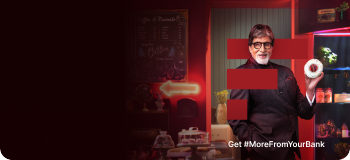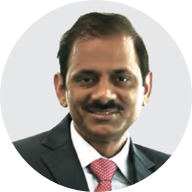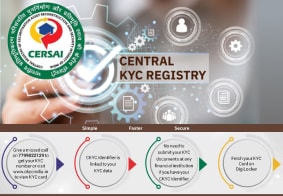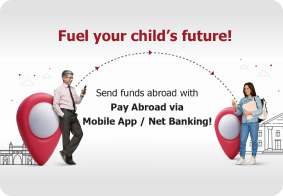CKYC Registry
-
Customer Service Contact us Service request Locate a branch
Find all the help you need
Scan the QR, get our app, and find help on your fingertips

Help CenterSupport topics, Contact us, FAQs and more
-
Login
Are you ready for an upgrade?
Login to the new experience with best features and services
-
Login
Are you ready for an upgrade?
Login to the new experience with best features and services
- Accounts
-
Deposits
IDFC FIRST Bank Deposits
View all Deposits -
Loans
IDFC FIRST Bank Loans
View all Loans - Wealth & Insure
-
Payments
IDFC FIRST Bank Payments
View all Payments -
Cards
IDFC FIRST Bank Cards
View all Cards - Blogs
- Corporate Account
-
Cash Management Services
IDFC FIRST Bank Cash Management Services
View all Cash Management Services - Supply Chain Finance
-
Corporate Lending
IDFC FIRST Bank Lending
View all -
Treasury
IDFC FIRST Bank Treasury
See more details - NBFC Financing
Support topics, Contact us, FAQs and more
- IDFC FIRST Bank Accounts
-
Savings Account
-
Corporate Salary
Account -
Senior Citizens
Savings Account -
First Power
Account -
Current Account
-
NRI Savings
Account -
TASC Institutional
Account -
Savings Account
Interest Calculator
- IDFC FIRST Bank Deposits
-
Fixed Deposit
-
Recurring Deposit
-
NRI Fixed Deposit
-
Safe Deposit Locker
-
FD Calculator
-
RD Calculator
- IDFC FIRST Bank Loans
-
Personal Loan
-
Consumer Durable
Loan -
Home Loan
-
Business Loan
-
Professional Loan
-
Education Loan
-
New Car Loan
-
Pre-owned Car Loan
-
Two Wheeler Loan
-
Pre-owned Two
Wheeler Loan -
Commercial Vehicle
Loan -
Gold Loan
-
Loan Against Property
-
Loan Against Securities
-
Easy Buy EMI card
-
Personal Loan
EMI Calculator -
Education Loan
EMI Calculator -
Home Loan
EMI Calculator
- IDFC FIRST Bank Wealth & Insure
-
FIRST Select
-
FIRST Wealth
-
FIRST Private
-
Mutual Funds
-
Sovereign Gold Bond
-
Demat Account
-
Term Insurance
-
Life Insurance
-
Health Insurance
-
General Insurance
-
Bonds
-
Loan Against
Securities -
Portfolio Management
Service
- IDFC FIRST Bank Payments
-
FASTag
-
Credit Card
Bill Payments -
UPI
-
Funds Transfer
-
Forex Services
-
Pay Loan EMI
- IDFC FIRST Bank Cards
-
Ashva :
Metal Credit Card -
Mayura :
Metal Credit Card -
FIRST Millennia
Credit Card -
FIRST Classic
Credit Card -
FIRST Select
Credit Card -
FIRST Wealth
Credit Card -
FIRST WOW!
Credit Card -
Deals
-
Debit Cards
-
Co-branded Cards
-
Credit Card
EMI Calculator -
FIRST Corporate
Credit Card -
FIRST Purchase
Credit Card -
FIRST Business
Credit Card
- Premium Metal Credit Cards
-
AshvaLifestyle1% Forex₹2,999
-
MayuraLifestyleZero Forex₹5,999
-
FIRST PrivateInvite Only
- Best for travellers
-
MayuraZero ForexMetal₹5,999
-
Ashva1% ForexMetal₹2,999
-
FIRST WOW!Zero ForexTravelLifetime Free
-
FIRST SWYPTravel OffersEMI₹499
-
FIRST Select1.99% ForexLifestyleLifetime Free
-
FIRST Wealth1.5% ForexLifestyleLifetime Free
-
Club VistaraTravelLifestyle₹4,999
-
IndiGo IDFC FIRST Dual Credit CardTravelLifestyle₹4,999
- Max benefits, Free for life
-
FIRST Classic10X RewardsShoppingNever Expiring Rewards
-
FIRST Millennia10X RewardsShoppingNever Expiring Rewards
-
FIRST Select10X RewardsLifestyle1.99% Forex
-
FIRST Wealth10X RewardsLifestyle1.5% Forex
-
FIRST WOW!RewardsTravelZero Forex
-
LIC ClassicRewardsInsuranceShopping
-
LIC SelectRewardsInsuranceShopping
- Reward Multipliers
-
AshvaLifestyleMetal₹2,999
-
MayuraLifestyleZero Forex₹5,999
-
FIRST ClassicNever Expiring RewardsShoppingLifetime Free
-
FIRST MillenniaNever Expiring RewardsShoppingLifetime Free
-
FIRST SelectNever Expiring RewardsLifestyleLifetime Free
-
FIRST WealthNever Expiring RewardsLifestyleLifetime Free
- Rewards & Credit on UPI
-
FIRST Power+FuelUPI₹499
-
FIRST PowerFuelUPI₹199
-
FIRST EA₹NVirtual1% Cashback₹499
-
FIRST DigitalVirtualUPI₹199
-
IndiGo IDFC FIRST Dual Credit CardUPITravelDual cards
- Fuel and Savings
-
FIRST PowerRewardsUPI₹199
-
FIRST Power+RewardsUPI₹499
-
LIC ClassicRewardsInsuranceShopping
-
LIC SelectRewardsInsuranceShopping
- Express and Flaunt
-
AshvaMetal1% Forex₹2,999
-
MayuraMetalZero Forex₹5,999
-
FIRST SWYPEMIOfferMAX₹499
-
FIRST MillenniaRewardsShoppingLifetime Free
- FD Backed rewarding Credit Cards for all
-
FIRST EA₹NVirtualCashback₹499
-
FIRST WOW!Zero ForexTravelLifetime Free
-
CreditPro Balance TransferTransfer & SaveReduce InterestPay Smartly
- IDFC FIRST Bank NRI Forex Solutions
-
Send money to India-Wire transfer
-
Send money to India-Digitally
-
Send money abroad
-
Max Returns FD (INR)
- IDFC FIRST Bank MSME Accounts
-
Platinum Current
Account -
Gold
Current Account -
Silver Plus
Current Account -
Merchant Multiplier
Account -
Agri Multiplier
Account -
TASC Institutional
Account -
Dynamic Current
Account -
World business
Account -
First Startup
Current Account
- IDFC FIRST Bank Business Loans
-
Business Loan
-
Professional Loan
-
Loan Against Property
-
Business Loan for Women
-
Working Capital Loan
-
Construction Equipment Loan
-
Machinery Loan
-
Healthcare Equipment Loan
- IDFC FIRST Bank Business Solutions
-
Payment Solutions
-
Tax Payments
-
Doorstep Banking
-
Point of Sale (POS)
-
Escrow Accounts
-
NACH
-
Payment Gateway
-
UPI
-
Virtual Accounts
-
As per amendment in the Income Tax Rules, PAN or Aadhaar are to be mandatorily quoted for cash deposit or withdrawal aggregating to Rupees twenty lakhs or more in a FY. Please update your PAN or Aadhaar. Kindly reach out to the Bank’s contact center on 1800 10 888 or visit the nearest IDFC FIRST Bank branch for further queries.
-
-
Most Searched
Sorry!
We couldn’t find ‘’ in our website
Here is what you can do :
- Try checking the spelling and search
- Search from below suggestions instead
- Widen your search & try a more generic keyword
Suggested
Get a Credit Card
Enjoy Zero Charges on All Commonly Used Savings Account Services
Open Account Now

Mr. V. Vaidyanathan
MANAGING DIRECTOR & CEO
Foreword from MD & CEO | Mr. V. Vaidyanathan
Dear All,
Through this note, I intend to share the sequence of events that culminated in the creation of IDFC FIRST Bank, and also share the founding theme, approach, and mission of the new bank IDFC FIRST Bank.
In 2004, the RBI announced two new bank licenses for Kotak Bank and Yes Bank. I was with my colleagues at ICICI Bank when the news broke and exclaimed to my colleagues, "Let's go to the RBI and ask for a bank license too!" Not that I tried; I figured that it was an impractical idea for an individual to apply for a bank license, yet the thought stayed.
A year later, I was inaugurating an MCHI Property exhibition, and one of the stalls we passed by, was of a palmist. My friends from ICICI often remind me how I asked the palmist in jest, "When will I get a bank license?" Jest it might have been, but it did reveal a wish and an idea nevertheless.
The following year, in 2006, I joined the ICICI Bank Board of Directors and such ideas went into cold storage only to come back to it five years later in 2010.
The issue was - How to get started? So I came across a simple idea - start an NBFC where entry is easier, build a unique business model by financing small entrepreneurs and new to credit customers, and approach the RBI for a banking license someday. I then came across an existing NBFC, so I decided to acquire a stake in it and give the idea a go. It was a long shot but an exciting thought.
And what would we finance? Since I was heading retail banking, the idea was to build a bank doing just that - retail banking. Thousands of small entrepreneurs all around us (shopkeepers, Kirana shops, auto mechanics, dentists, etc.) could not avail credit from the formal financial system because of not filing income tax returns, but usually had a strong cashflow or sound business model since generations. Further, the middle class was beginning to borrow for consumption. The thought was to provide finance for their businesses, and for buying homes, cars and consumption to the less organised. I thought of this as a big need, and a great opportunity. (An aside: Post merger with IDFC Bank, I am realizing that there is great opportunity in corporate banking too and we can build a good business too, albeit selectively. This realization I did not have then, though.)
I set out in 2010 with this plan. The NBFC I got involved with was a loss-making one, it had made losses of Rs. 30 crores & Rs. 32 crores in the prior two years, respectively. But it saved time in getting access to an NBFC license. So I leveraged myself and acquired equity stakes. We shut down unrelated businesses like foreign exchange, broking, asset management and wealth management, and instead started consumer and small business financing in the entity as part of the longer plan.
It was the hardest five years of my life. Raising debt funding was difficult for a start-up loss making entity, and when it was available, it was expensive - we were borrowing at Base Rate plus 500 bps (about 14% rate of interest in today’s terms), and we lent upwards of 20%. During this period, the growth rate of the Indian economy was falling precipitously, inflation was high (9-10%), and the RBI was raising interest rates - they raised it 16 times at a stretch.
But the target customer segment was clear - it was the unorganized, underserved segment, by using technology. It was riskier to lend to, so we had to discover new ways to lend with greenfield research, sans tax returns. Over 50% of our target customers were not on the credit bureau as no one in the formal sector had lent to them. So we had to be extra careful.
The idea took off well; within a year, the retail loan book grew from Rs. 94 crores to Rs. 770 crores and we had the desired proof of concept to show to potential equity investors. We were fast running out of equity and our maiden attempt to raise equity through QIP had failed to take off. Since the company was in its infancy, I learnt there was another way to raise equity - Private Equity. After countless presentations for over a year to all major PE players demonstrating the proof of concept, we won the backing of Rs. 810 crores in 2012. We were racing against time to get the equity. Selling the idea to a backer was not enough, there were too many approvals to take: from the RBI, SEBI (for Open Offer), FIPB, lenders, shareholders, Forward Markets Commission, and so on. The day the money clinked in the bank account, I asked the CFO three times over the phone to check if it was true. That night I couldn't sleep.
Leveraged Management Buyouts are not uncommon in the west, but in India, this was one of the rare ones. We got a new Board, and new shareholders. We recapitalized the company with a Preferential Allotment followed with a QIP, created a new entity and brand called Capital First. The business continued to grow.
Within just seven years we had grown retail loans from Rs. 94 crores to Rs. 18,353 crores in March 2017. We became a strong brand name in the consumer financing segment. The best part was that our asset quality was pristine all through these years. The Gross and Net NPA were low consistently at less than 2% and less than 1% respectively. Our market cap jumped 10X from Rs. 780 crores to over Rs. 7800 crores between 2012 and 2017. At that stage I sold a part of my stake in the company in March 2017 to close the loan I had availed to acquire the stake in the beginning. In parallel, since a couple of years, I had felt it was time to try and convert to a bank and to apply for a bank license from the RBI. By this time, the RBI had announced norms for on-tap banking licenses for eligible entities.
Meanwhile, a great story was playing out at the IDFC Group under Dr. Lall's dynamic leadership. Under his leadership, IDFC Limited, which was primarily into infrastructure financing, had successfully expanded into Asset Management (acquiring Standard Chartered AMC), Alternative Asset Management (infrastructure focused), Securities (acquiring SSKI) and Investment Banking. IDFC Limited became a highly successful and diversified group. IDFC Limited had applied for and successfully acquired a banking license in 2014. His extra-ordinary foresight told him that life as an infrastructure financing company had its limitations, particularly if markets turned hostile to infrastructure. The bank was successfully launched in 2015 and had set up 17 urban and 83 rural branches by the time Dr. Lall dialed me in November 2017. Getting a banking license in India is not an easy task; and it was a great accomplishment for Dr. Lall to get one for the infrastructure lending group.
The value proposition was straightforward for both of us. IDFC Bank needed to retailise the loan book away from infrastructure. Building retail financing takes time, often years. Capital First fit the bill perfectly as a merger partner as the retail lending franchise was already built, the loan book was large at over Rs. 22,000 crores (Sep 17). Not just that, the loan book was seasoned over cycles through seven years, was growing at CAGR of 29%, and net profits were growing at a CAGR of 40%. It was a one-shot fast forwarding for IDFC Bank's diversification.
From Capital First's point of view, it got access to the banking license. IDFC Bank had already rolled out 17 urban branches network, had also set up a fine rural banking network of 83 branches, had great people, had already launched many unique products and services in the market, and was ripe for a scale-up on the liabilities side. It was straight away fast forward for the banking license plan. Once we met and agreed, both parties quickly appointed lawyers, started financial and legal due diligence on each other, appointed the bankers, all in extreme secrecy.
This was not my first encounter with Dr. Lall. After our QIP had failed in 2011, I had met him to request him to provide us Rs. 200 crores of subordinated debt. He had politely declined the loan as it was a risky proposition (I knew he wasn't wrong either: we were too early stage, had no equity backing and were unprofitable!) Little did we know that many years later, we would be merging our companies!
We announced the deal to the markets on January 13, 2018. We got steadfastly working on putting the merger together. After a year-long process of getting approvals including Competition Commission of India, Stock Exchanges, SEBI, RBI, creditors, shareholders and NCLT, and other such approvals, we formally merged on 18th December 2018 and a new entity was founded by the merger, IDFC FIRST Bank. 99.98% of IDFC Bank Shareholders and 99.9% of Capital First Shareholders by value approved the transaction. Investment bankers said near 100% approval rates were "astonishing", "extraordinary" and "unprecedented", considering that the two entities were publicly listed and widely traded companies together with near 8,00,000 shareholders.
So where do we go from here? What do we want to achieve?
Since we have new shareholding, new brand name, new brand colour, a new Board, I see IDFC FIRST Bank practically as a new bank, but with great strengths of the two entities incorporated into one. It pretty much feels like how we felt when Capital First was founded in 2012, with all things new - identity, name, brand colour, shareholders, Board of Directors and business model.
As the first MD and CEO of the new bank, I wanted to share our approach, our mission, our founding theme and our innate wish of what we want to achieve.
First, the new bank has a new mission and a revised strategy into the future. The opportunity in India is immense across consumer banking and corporate banking and we have the intent, capability and the skills to participate in it.
My approach for IDFC FIRST Bank is to keep it a simple Bank, easy to know and easy to understand. The core business model of a simple bank is to borrow from depositors and lend to borrowers (retail, SMEs and to Corporates). And primarily to meet the needs of people for transacting, borrowing, lending, investing and protecting. Complicated opaque products create a complicated bank, we don't want to go on that route.
The common man and the small, medium and emerging corporates are the new aspiring India, and there is a shortage of banks that provide high quality banking to the new aspiring India. So our mission is to provide "high-quality banking to the new aspiring India."
The founding theme of our Bank is to place the customer ahead in all its endeavours. With due respect to applicable boundaries of regulations and risk, we will design our policies, products and programs and everything else around one theme -"The customer comes first." Hence we have chosen the tagline "Always You First."
Finally we wish to touch the lives of millions of Indians in a positive way. We have a high focus on technology in order to reach and serve customers across large and small corporates, but with particular focus to provide financial services to micro, small and medium entrepreneurs and to retail customers. We will also selectively pursue corporate banking by finding unique solutions for our chosen market segment. Above all, we want to be a bank of great service to society.
We are confident of not only participating in the growth of Indian GDP, but also contributing to the growth of our beloved nation and her people. We aspire to create millions of employment opportunities, and finance the growth of business and consumption. This will lead to greater domestic production, greater consumption, and we want to contribute in further fuelling the virtuous cycle of growth for our great nation.
Thank you for your patronage.
With warm regards,
V. Vaidyanathan







